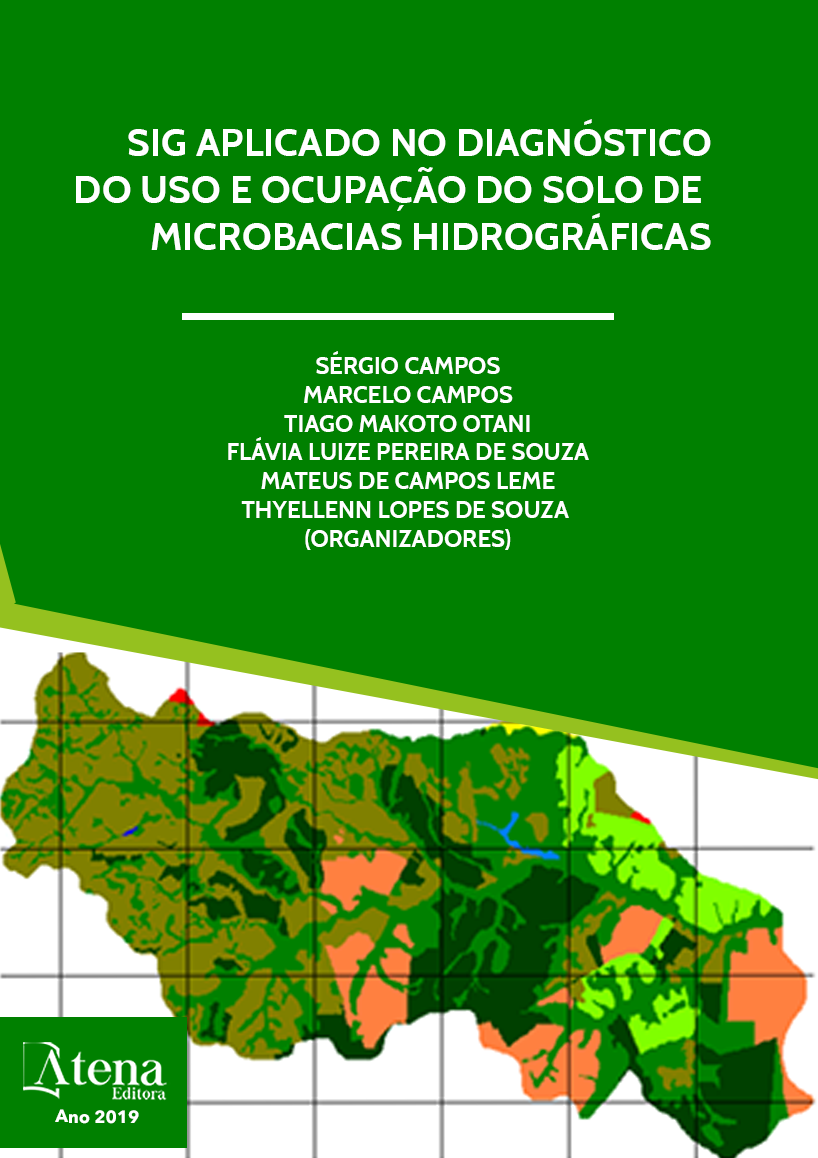
ESPACIALIZAÇÃO DO USO DA TERRA EM MICROBACIA
A análise do uso e cobertura do
solo, através de informações obtidas pelo
sensoriamento remoto, é de grande utilidade
no planejamento e administração da ocupação
ordenada e racional do meio físico, além
disso possibilita avaliar e monitorar áreas
de preservação de vegetação natural. O
presente trabalho objetivou analisar a evolução
paisagística da microbacia do Córrego Três
Barras - Botucatu (SP) através do Sistema
de Informações Geográficas – IDRISI 32 e de
imagem de satélite LANDSAT 5 e fotografias
aéreas verticais, no período de 34 anos. A
área de estudo situa-se entre as coordenadas
geográficas: latitude 22º47’08” a 22º51’29”
S e longitudes 48º22’16” a 48º26’12” W Gr.,
apresentando uma área de 1656ha. A cobertura
vegetal em 1962 apresentou os seguintes
resultados: reflorestamento – 151,33ha (9,14%);
uso agrícola – 73,83ha (4,46%); pastagens –
881,10ha (53,21%); floresta – 482,26ha (29,12%)
e solos exposto – 67,48ha (4,07%) e em 2006:
reflorestamento – 2,74ha (0,17%); floresta –
1059,22ha (63,96%); pastagens – 283,32ha
(17,10%); uso agrícola – 254,30ha (15,36%)
e várzea – 56,42ha (3,41%). Os resultados
permitiram constatar que houve um incremento
significativo na área de uso agrícola em função
da redução das áreas de pastagens. As imagens
do Sensor TM do Landsat 5, permitiram o
mapeamento do uso da terra da microbacia de
maneira rápida e confiável, além de fornecer
um excelente banco de dados para futuros
planejamentos. O SIG-Idrisi através de seus
diferentes módulos para georreferenciamento,
classificação digital do uso da terra e modelo
matemático permitiu a discriminação dos usos
da terra: reflorestamento, floresta, pastagem,
uso agrícola, solo exposto e várzea.
ESPACIALIZAÇÃO DO USO DA TERRA EM MICROBACIA
-
DOI: 10.22533/at.ed.96319191112
-
Palavras-chave: Evolução paisagística, sensoriamento remoto, geoprocessamento.
-
Keywords: Landscape evolution, remote sensing, geoprocessing.
-
Abstract:
The analysis of land use and
land cover, using information obtained by
remote sensing, is very useful in the planning
and management of the orderly and rational
occupation of the physical environment, and also
allows the assessment and monitoring of natural
vegetation preservation areas. The present
work aimed to analyze the landscape evolution
of the Três Barras Stream - Botucatu (SP)
microbasin through the Geographic Information
System - IDRISI 32 and LANDSAT 5 satellite
image and vertical aerial photographs, over a
period of 34 years. The study area lies between
the geographical coordinates: latitude 22º47'08”
to 22º51'29” S and longitudes 48º22'16” to
Capítulo 12 66
48º26'12” W Gr., Presenting an area of 1656ha. The vegetation cover in 1962 presented
the following results: reforestation - 151.33ha (9.14%); agricultural use - 73.83ha
(4.46%); pastures - 881.10 ha (53.21%); forest - 482.26ha (29.12%) and exposed soils
- 67.48ha (4.07%) and in 2006: reforestation - 2.74ha (0.17%); forest - 1059.22 ha
(63.96%); pastures - 283.32ha (17.10%); agricultural use - 254.30ha (15.36%) and
lowland - 56.42ha (3.41%). The results showed that there was a significant increase in
the area of agricultural use due to the reduction of pasture areas. Landsat 5 Sensor TM
imagery has enabled the rapid and reliable mapping of land use in the watershed and
provides an excellent database for future planning. The GIS-Idrisi through its different
modules for georeferencing, digital land use classification and mathematical model
allowed the discrimination of land uses: reforestation, forest, pasture, agricultural use,
exposed soil and floodplain.
-
Número de páginas: 15
- Leandro Moreira Manzano
- Sérgio Campos
- Ana Paula Barbosa
- Bruno


